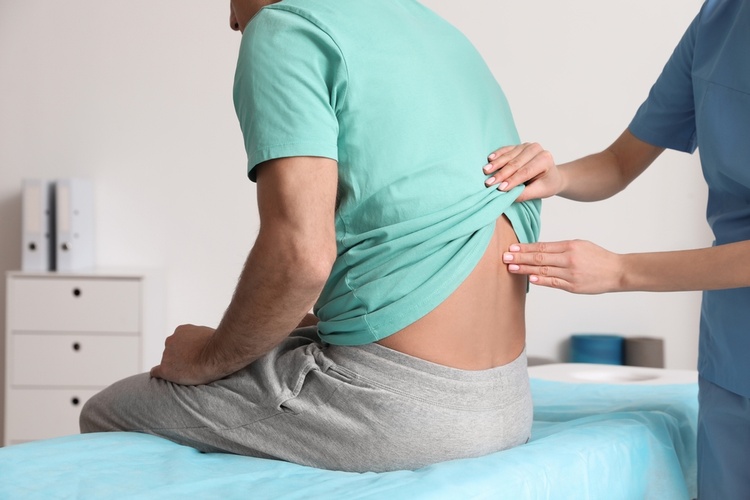Spinal Stenosis Relief: Treatments to Ease Back Pain
Spinal stenosis occurs when the spaces surrounding spinal nerves narrow, causing persistent back pain, leg weakness, or numbness. This guide outlines diagnostic steps and a range of treatment options—from physical therapy and injections to minimally invasive and open surgery—so you can weigh risks, benefits, and next steps with your clinician.

Spinal Stenosis Relief: Treatments to Ease Back Pain
What is spinal stenosis?
Spinal stenosis refers to the narrowing of the spinal canal or the foramina—the passageways where nerves exit the spine. This narrowing can press on nerve roots or, in severe cases, the spinal cord itself. Age-related changes are the most common cause: intervertebral discs lose height, ligaments thicken, and bone spurs may develop. The lumbar (lower back) and cervical (neck) regions are most frequently involved. Symptoms vary depending on which nerves are affected and how much compression exists; understanding the spine’s structure clarifies why stenosis can produce local pain, radiating limb symptoms, or neurologic problems.
How does stenosis cause back pain and other symptoms?
Pain from stenosis often results from a combination of mechanical compression, nerve irritation, and secondary inflammation. In the lower spine, neurogenic claudication is a hallmark: patients report leg pain, tingling, heaviness, or weakness that worsens with standing or walking and eases when sitting or leaning forward. Cervical stenosis typically causes neck pain with radiating arm symptoms and, in advanced cases, can affect coordination, balance, and fine motor skills. The severity of symptoms depends on the degree of narrowing, which nerves are involved, and personal factors such as overall health, fitness, and other medical conditions.
How is spinal stenosis diagnosed?
A diagnosis starts with a careful medical history and a focused physical and neurological exam to identify patterns of pain, weakness, and reflex changes. Imaging confirms and characterizes the problem: MRI is the preferred test because it clearly shows soft tissues, nerve roots, and the extent of canal narrowing. CT scans (sometimes paired with myelography) help when MRI is not possible or to better evaluate bone anatomy. Plain X-rays can detect spinal alignment issues or instability. Electromyography (EMG) and nerve conduction studies may be used to separate nerve compression from peripheral neuropathies or systemic causes. Accurate correlation between symptoms, exam findings, and imaging is important to guide treatment.
Non-surgical treatments and what they can achieve
Most people begin with conservative care. Physical therapy emphasizes core strength, lumbar and cervical stability, flexibility, posture correction, and strategies to reduce nerve irritation. Supervised exercise programs and aquatic therapy are beneficial for improving endurance without excessive spinal load. Medications range from over-the-counter pain relievers and anti-inflammatories to short courses of prescription drugs; agents that target nerve pain may be helpful for neuropathic symptoms.
Epidural steroid injections can reduce local inflammation around compressed nerves and provide temporary symptom relief for some patients, permitting participation in rehab. Lifestyle measures—weight management, activity modification, use of walking aids or braces—also decrease mechanical stress and improve daily function. Cognitive approaches and pain-management strategies help people adapt when pain becomes chronic. Conservative care can improve pain and function for months to years, but it rarely reverses the structural narrowing itself. Regular follow-up is necessary to monitor progression and decide if more invasive options are warranted.
When is surgery considered?
Surgery is typically recommended when non-surgical methods fail to provide acceptable relief, when neurological deficits worsen (for example, increasing leg weakness, loss of bowel or bladder control, or significant gait disturbance), or when severe compression on imaging aligns with the clinical picture. The most common operations remove the tissue compressing nerves, such as decompressive laminectomy or laminotomy. When those procedures threaten spinal stability or when instability already exists, fusion may be added to maintain alignment.
Minimally invasive techniques can achieve decompression with less soft-tissue disruption and often quicker recovery for suitable candidates. Surgical goals are to relieve nerve pressure, reduce pain, and restore function; potential complications include infection, bleeding, nerve injury, and the possibility of needing further surgery later. Postoperative recovery usually involves a period of activity modification followed by rehabilitation to rebuild strength and mobility.
| Treatment | Typical Cost Range (estimates) |
|---|---|
| Physical therapy (per session) | $50–$200 |
| Epidural steroid injection | $500–$3,000 |
| Decompression surgery (laminectomy) | $10,000–$50,000 |
| Spinal fusion | $20,000–$80,000 |
Cost disclaimer: Prices are estimates and vary by location, provider, insurance coverage, and individual clinical needs.
Coordinated, multidisciplinary care and how to find it
Managing spinal stenosis often works best with a team approach: your primary care clinician, spine surgeons (orthopedic or neurosurgical), physiatrists, physical therapists, and pain-management specialists can all play roles. Look for providers experienced in both conservative and operative spine care and for centers that offer coordinated assessment—clinical evaluation, imaging, interventional procedures, and rehabilitation—so decisions are made in context. Shared decision-making, in which you discuss goals, expected outcomes, risks, and recovery timelines with your team, improves satisfaction and function.
Conclusion
Spinal stenosis treatment ranges from non-invasive therapies to surgical decompression. The right pathway depends on symptom severity, functional goals, imaging findings, and your overall health. Early recognition, thoughtful conservative care, and timely escalation when needed can lessen pain and preserve mobility. Discuss imaging results and neurologic findings with a qualified clinician to determine the most appropriate stepwise plan.
This article is for informational purposes only and should not be considered medical advice. Please consult a qualified healthcare professional for personalized guidance and treatment.






